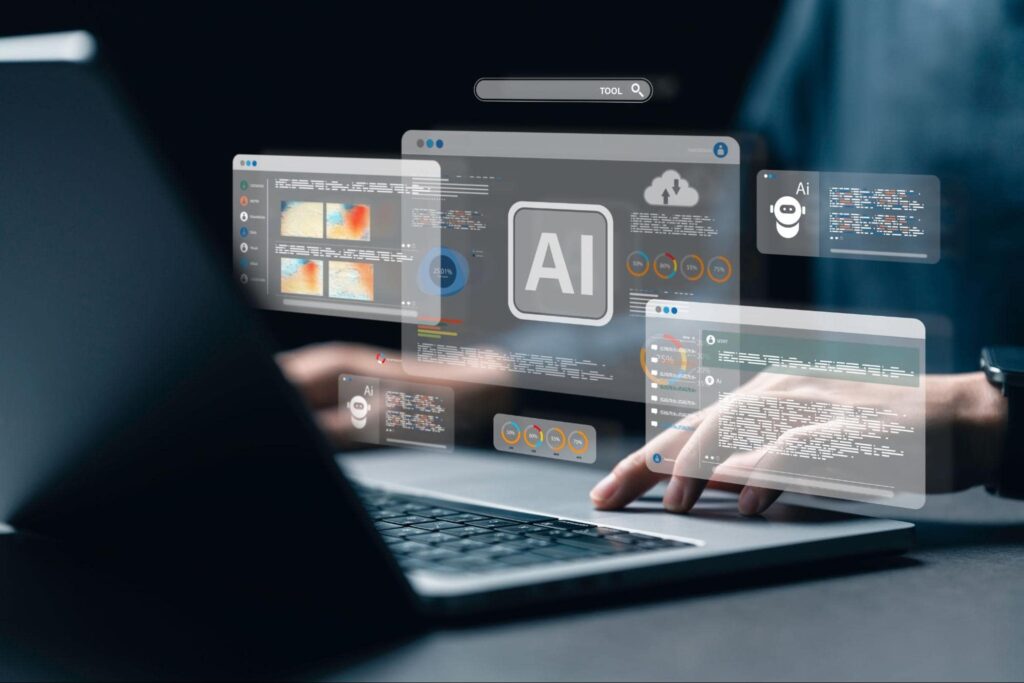Read about the importance of transitioning business processes from paper to digital. In this post we outline key steps and technologies to consider for success
The following is a guest post from my bloggy friend Megan Isola. Interested in having a guest post on my website? Click here for my guest post submission form.
Embracing the Digital Revolution: A Guide to Modernizing Your Business Processes
If you still haven’t transitioned your business processes to a digital climate, it’s time to get out of that rock you’ve been living under. Businesses that fail to adopt digital processes face the threat of falling behind competitors. The shift from paper to digital not only streamlines operations, but also enhances efficiency, scalability, and innovation.
In this era of rapid technological advancement, embracing digitalization is no longer an option but a strategic imperative for organizations looking to thrive in the modern marketplace. This article explores the essential steps and considerations involved in transitioning business processes from paper to digital, empowering enterprises to embrace the opportunities of the digital age and unlock new levels of success.
Initial steps
Set your objectives
First things first, you need to define what you aim to achieve with your digital transition. Whether it’s reducing paperwork, improving data accuracy, enhancing the customer experience, or increasing accessibility to information, having clear objectives will guide your digital transformation efforts.
Choose the Right Tools and Technologies
There’s a ton of tech for businesses out there, but not all of them will meet the needs of your business. This is why it’s crucial to take your time and find what tools will have the most benefit for your business.
Research and select the digital tools and technologies that best suit your business needs. This might involve investing in document management systems, customer relationship management (CRM) software, project management tools, collaboration platforms, or workflow automation software.
Create new training protocols
When you have a team that’s used to doing everything by hand, you must anticipate a period where you have to train your employees on how to best use these tools. Introduce the new digital tools and processes to your team, and provide adequate training and support to ensure a smooth transition. Address any concerns or resistance to change through effective change management strategies, such as communication, education, and involving employees in the decision-making process.
Data Security and Compliance
Another extremely key consideration throughout your digital transformation is security and compliance. While on-site processes certainly come with their own set of risks, they vary completely from the risks associated with digital transformations.
When investing in digital tools, you must implement robust security measures to protect sensitive data and ensure compliance with relevant regulations, such as GDPR or HIPAA. This includes encryption, access controls, regular audits, and employee awareness programs on cybersecurity best practices.
What kinds of tools should you consider?

Artificial intelligence (AI) and machine learning (ML)
AI and ML technologies represent pivotal tools for businesses aiming to streamline operations and gain competitive advantages in the digital age. AI encompasses a broad spectrum of capabilities, from natural language processing to computer vision, enabling automation, pattern recognition, and predictive analytics.
ML, a subset of AI, focuses on algorithms that learn from data and make decisions or predictions autonomously. By integrating AI and ML into their processes, businesses can automate routine tasks, enhance decision-making with data-driven insights, and personalize interactions with customers at scale.
Robotic process automation (RPA)
Robotic Process Automation (RPA) offers a potent means to streamline operations, reduce costs, and improve accuracy by automating repetitive, rule-based tasks. RPA software robots mimic human actions within digital systems, performing tasks such as data entry, invoice processing, and report generation with speed and precision. By deploying RPA, your organization can achieve operational efficiencies, enhance scalability, and free up human resources for more strategic endeavors.
Blockchain technology
Blockchain technology presents a paradigm shift in data management, offering unparalleled security and transparency through its decentralized and immutable ledger system. By leveraging cryptographic techniques and distributed consensus protocols, blockchain ensures tamper-proof records of transactions, enhancing trust and accountability across various industries.
You can utilize blockchain for applications such as supply chain management, digital identity verification, and smart contracts, enabling secure and transparent transactions without intermediaries.
Predictive analytics
Predictive analytics empowers your business to unlock actionable insights from vast amounts of data, enabling informed decision-making and proactive strategy formulation. By leveraging historical data and machine learning algorithms, predictive analytics forecasts future trends, behaviors, and outcomes, enabling businesses to anticipate market shifts, optimize resource allocation, and mitigate risks.
You can apply predictive analytics across various domains, from customer relationship management and inventory optimization to risk management and healthcare outcome prediction.
Remote and mobile work solutions
Empower employees to work from anywhere by implementing mobile-friendly and remote work solutions. Provide mobile apps, cloud-based collaboration platforms, and virtual desktop infrastructure (VDI) to enable seamless access to digital tools and information, regardless of location or device.
User experience (UX) design
Prioritize UX design principles when developing digital interfaces and applications. Ensure that digital tools are intuitive, user-friendly, and accessible across different devices and screen sizes. Conduct usability testing and gather feedback from end-users to iteratively improve the user experience and maximize adoption.
Advanced data analytics and visualization tools
Explore advanced data analytics and visualization tools to gain deeper insights into your business data and communicate complex information more effectively. Implement interactive dashboards, data storytelling techniques, and data mining algorithms to uncover hidden patterns, correlations, and actionable insights from large datasets.
Custom digital solutions
Consider building custom digital solutions tailored to your specific business needs and workflows. Engage with software developers, data scientists, and UX/UI designers to design and develop bespoke applications, algorithms, or platforms that address unique challenges and deliver maximum value to your organization.
Agile and DevOps practices
Agile methodologies and DevOps practices accelerate the development and deployment of your digital solutions. These tools encourage cross-functional collaboration, continuous integration, and automated testing to deliver high-quality software faster and more efficiently while ensuring alignment with business objectives and customer needs.
Getting your business with the times
By embracing digitalization, your business can streamline operations, enhance productivity, and improve customer experiences. Whether you sell medical supplies or run a retail store, the adoption of digital solutions enables your organization to leverage advanced technologies such as artificial intelligence, blockchain, and predictive analytics to drive competitive advantage and fuel future success.
As we continue to embrace the opportunities of the digital age, the journey from paper to digital represents not only a technological evolution but a strategic imperative for businesses seeking to thrive in an increasingly digital world. With careful planning, investment, and a commitment to innovation, organizations can successfully transition their business processes into the 21st century and position themselves for sustained growth and prosperity.
About the Author
Megan Isola holds a Bachelor of Science in Hospitality and a minor in Business Marketing from Cal State University Chico. She enjoys going to concerts, trying new restaurants, and hanging out with friends.







